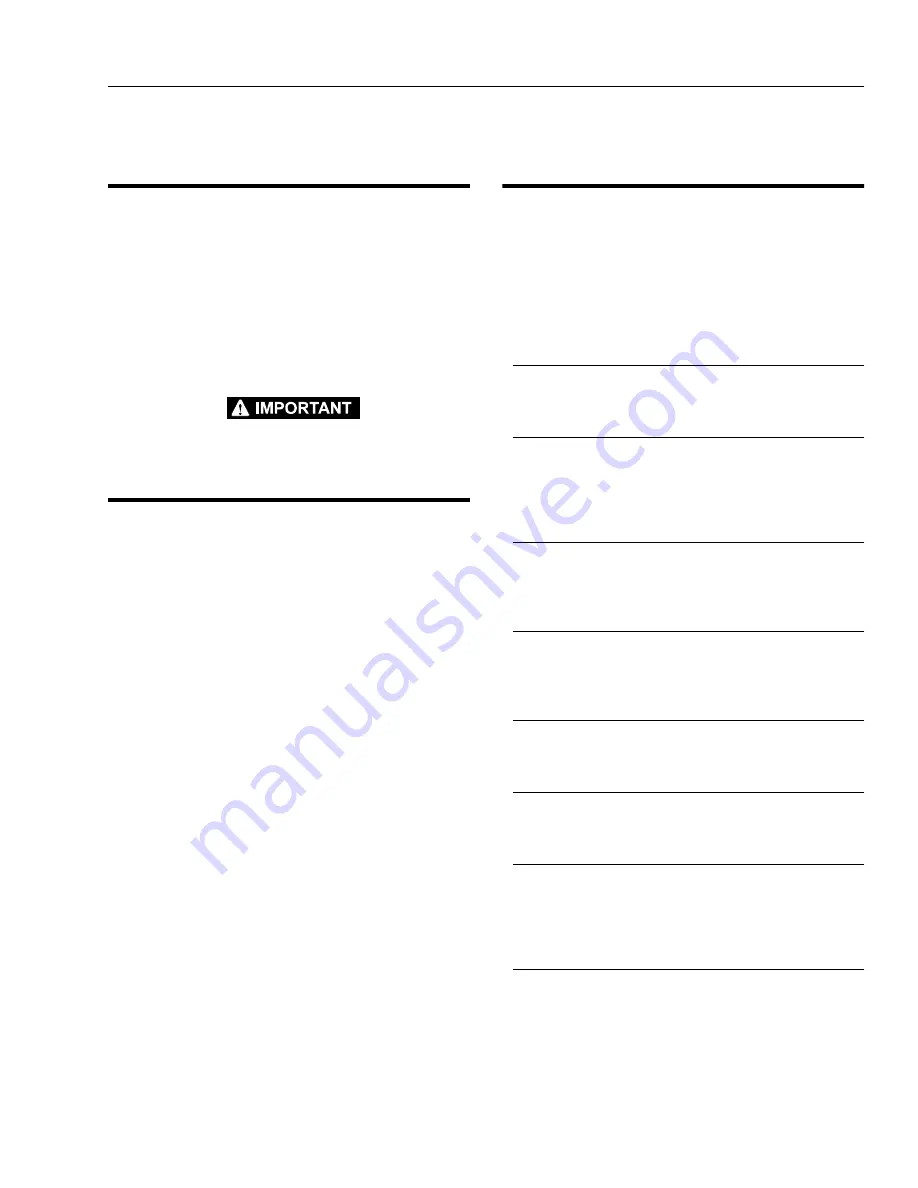
SECTION 2 - PREPARATION AND INSPECTION
3120727
– JLG Lift –
2-1
SECTION 2. PREPARATION AND INSPECTION
2.1
GENERAL
This section provides the necessary information needed
by those personnel that are responsible to place the
machine in operation readiness, and lists checks that are
performed prior to use of the machine. It is important that
the information contained in this section be read and
understood before any attempt is made to operate the
machine. Ensure that all the necessary inspections have
been completed successfully before placing the machine
into service. These procedures will aid in obtaining maxi-
mum service life and safe operation.
SINCE THE MACHINE MANUFACTURER HAS NO DIRECT CON-
TROL OVER THE FIELD INSPECTION AND MAINTENANCE, THIS
IS THE RESPONSIBILITY OF THE OWNER/OPERATOR.
2.2
PREPARATION FOR USE
Before a new machine is put into operation it must be
carefully inspected for any evidence of damage resulting
from shipment and inspected periodically thereafter, as
outlined in Section 2-3, Delivery and Frequent Inspection.
The unit should be thoroughly checked for hydraulic leaks
during initial start-up and run. A check of all components
should be made to assure their security.
All preparation necessary to place the machine in opera-
tion readiness status are the responsibility of manage-
ment personnel. Preparation requires good common
sense,
(i.e. lift works smoothly)
coupled with a series of
visual inspections. The mandatory requirements are given
in Section 2-4, Daily Walk Around Inspection.
It should be assured that the items appearing in the Deliv-
ery and Frequent Inspection and Functional Check are
complied with prior to putting the machine into service.
2.3
DELIVERY AND FREQUENT INSPECTION
The following check list provides a systematic inspection
to assist in detecting defective, damaged, or improperly
installed parts. The check list denotes the items to be
inspected and conditions to examine. Frequent inspection
shall be performed every three (3) months or 150 hours,
or more often when required by environment, severity,
and frequency of usage.
Platform Assembly
Properly secured; no visible damage; free of dirt and
debris. Platform gate functions properly.
Mast
No visible damage, abrasions and/or distortions; no bind-
ing; mast sections free of dirt or other foreign material.
Sequencing cables properly secured; no visible damage;
proper cable tension.
Mast Chains & Cables
No visible damage; proper chain/cable tension; evidence
of proper lubrication. Chain/cable sheaves, sheave pins
and rollers properly secured; no visible damage.
Platform Controller/(Power) Cable(s)
No visible damage; cable properly tensioned and seated
in control cable sheaves; control cable sheaves not dam-
aged and rotating freely.
Lift Cylinder (check w/mast extended)
No rust, nicks, scratches or foreign material on piston rod.
No leakage.
Frame
No visible damage; loose or missing hardware (
top and
underside)
.
Drive Wheels and Front Casters
Casters free rolling; no loose or missing parts; no visible
damage. Drive wheel hub retainer ring secure; no damage
to wheel tread; electric drive motors secure; no loose or
missing wires.
Hydraulic Oil Supply
Check the hydraulic oil level of the hydraulic fluid reservoir
located in the lower access hole on the rear cover. Main-
tain an oil level to the “Fill To Line” indicator on the side of
reservoir.
If fluid level is low, see Table 2-1. “ Lubrication Interval
Chart” for information on hydraulic oil.
Summary of Contents for 10VP
Page 2: ...JLG Lift...
Page 4: ...This page intentionally left blank...
Page 8: ...EFFECTIVITY PAGE d JLG Lift 3120727 This page intentionally left blank...
Page 22: ...SECTION 2 PREPARATION AND INSPECTION 2 8 JLG Lift 3120727 Figure 2 6 Torque Chart...
Page 44: ...SECTION 5 OPTIONAL EQUIPMENT 5 4 JLG Lift 3120727 This page intentionally left blank...
Page 50: ......
Page 51: ......
















































